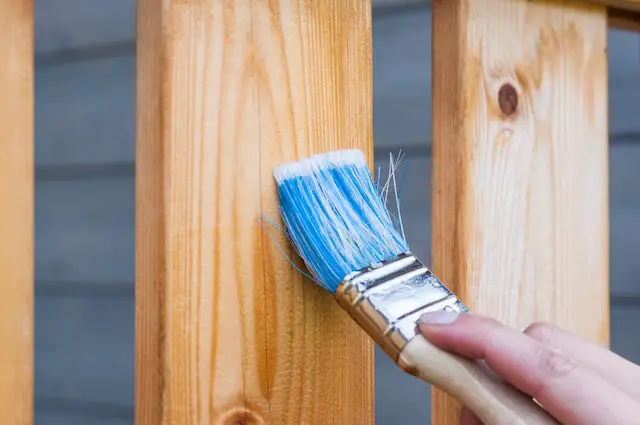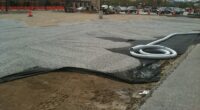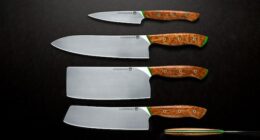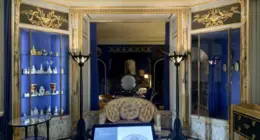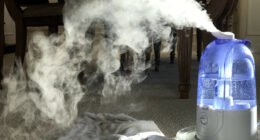Both lacquer and varnish are popular finishes used in woodworking, but they have distinct differences that make them better suited for certain projects. Lacquer is known for its quick-drying time and high-gloss finish, while varnish offers more protection against moisture and scratches.
What is lacquer?
(Photo by Simon Kadula on Unsplash )

Lacquer is a popular wood finish that has been used for centuries in Asian countries. It is a clear, durable, and glossy coating that enhances the color and grain of the wood. Lacquer is made by dissolving nitrocellulose or synthetic resins in solvents like alcohol or lacquer thinner.
One of the unique characteristics of lacquer is its ability to dry very quickly. This makes it an ideal choice for mass-produced furniture as well as DIY projects that require fast results. Additionally, lacquer can be easily sprayed on with an airbrush or spray gun, which creates a smooth and even finish.
There are different types of lacquers available in the market such as nitrocellulose lacquers, acrylic lacquers, water-based lacquers, etc., each with their own advantages and disadvantages. Nitrocellulose lacquers have been around since the early 20th century while acrylics are relatively new entrants to this field.
Using a high-quality lacquer on your woodworking project will provide you with long-lasting protection while also enhancing its beauty. Just ensure proper ventilation when working with it due to its strong fumes!
What is varnish?
(Photo by Ono Kosuki)
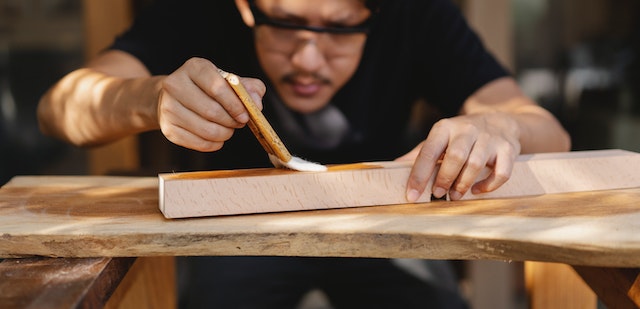
Varnish is a popular wood finishing product that can be used on any type of wooden surface. It’s typically made from a combination of resins, oils, and solvents that create a hard and durable finish once applied to the wood. The primary purpose of varnish is to protect the wooden surface from damage caused by water, sunlight, and other environmental factors.
One of the key benefits of using varnish is its versatility. It can be used on any type of wooden surface – whether it’s indoor or outdoor furniture, floors or doors – and comes in various finishes such as gloss, satin or matte.
Another benefit of using varnish is its durability. Once applied correctly onto properly prepared surfaces with several layers as required it will last for years protecting your investment while requiring minimal maintenance.
However, there are also some disadvantages associated with using varnish including long drying time which requires patience before applying additional coats; strong odor during application process which demands proper ventilation; difficulty changing color after application since sanding between coats may affect the final result; and being more prone to yellowing over time when exposed to natural light.
Lacquer Vs. Varnish – Key differences
When it comes to choosing the right finish for your project, understanding the key differences between lacquer and varnish is crucial. Lacquer is a clear coating that dries quickly and creates a hard, durable surface. It’s typically made from nitrocellulose or acrylic resins dissolved in solvents such as alcohol or acetone.
On the other hand, varnish is an oil-based product that contains a resin binder, drying oils like linseed oil or tung oil, and solvents. It has a slower drying time than lacquer but provides excellent protection against water and UV rays.
One of the key differences between these two finishes is their application method. Lacquer can be sprayed onto surfaces using specialized equipment while varnish requires brushes or rollers for application. Additionally, lacquer provides a thinner coating compared to varnish which tends to build up with each coat applied.
Another notable difference between these finishes lies in their appearance after drying. While both offer varying levels of glossiness based on sheen options available (matte/satin/gloss), lacquers tend to dry clearer than varnishes which may have a yellowish tint over time due to oxidation.
Deciding which finish to use depends on your project requirements; if you need fast-drying protection for interior projects choose lacquer whereas if you require long-lasting exterior protection opt for varnishes instead!
How to choose the right finish for your project
Choosing the right finish for your project is crucial to achieving the desired look and feel. There are a few things you need to consider before making a decision.
Firstly, think about the type of wood you’re working with. Some woods are more porous than others, which can affect how well they absorb different finishes. It’s important to choose a finish that is suitable for the type of wood you have.
Secondly, consider the purpose of your project. Will it be used indoors or outdoors? If it will be exposed to harsh weather conditions or high levels of moisture, then you’ll need a durable and waterproof finish such as varnish.
Thirdly, think about the level of shine you want in your finished product. Lacquer tends to give off a glossy sheen while varnish has more depth and warmth but may require more coats.
Take into account any personal preferences for color or texture. Do you prefer natural-looking finishes or something with more pigment?
By considering these factors when choosing between lacquer and varnish (or other finishes), you’ll be able to make an informed decision that will ensure your project looks beautiful and lasts for years to come!
Is lacquer more durable than varnish?
When it comes to durability, both lacquer and varnish have unique properties. However, lacquer is considered to be more durable than varnish due to its higher solid content. Lacquer forms a hard and protective layer that can withstand scratches, heat, water damage, and UV rays.
On the other hand, varnish has a lower solid content which makes it less durable compared to lacquer. Varnish tends to yellow over time when exposed directly to sunlight or high temperatures. It can also crack or peel off in humid environments.
Lacquer is an excellent option for projects that require long-lasting protection such as furniture pieces that are frequently used or outdoor structures like doors and windows. Its superior durability allows it to maintain its shine even after years of use.
However, there are instances where varnish might be the better choice – like for wooden boats since they need flexibility instead of hardness because they move with waves on the water surface.
While lacquer may be more durable than varnish in most cases; choosing between them ultimately depends on what type of project you’re working on.
The advantages and disadvantages of using lacquer
Lacquer is a popular finish for furniture and woodwork. It has several advantages, such as its fast drying time and the ability to create a high-gloss finish. One of the main benefits of lacquer is that it dries quickly, which means you can apply multiple coats in one day. This makes it an ideal choice if you’re working on a project with tight deadlines.
Another advantage of using lacquer is that it creates a hard and durable coating. Lacquered surfaces are resistant to scratches, water damage and stains. They also provide protection against UV radiation, which can cause fading or discoloration over time.
However, there are some disadvantages to using lacquer as well. One major disadvantage is that it requires proper ventilation when applying because the fumes are toxic and flammable.
Additionally, once dry lacquer cannot be re-softened or repaired easily without professional intervention due to its chemical makeup making repairs difficult unless done by someone experienced in working with this material.
Furthermore, while lacquers do offer excellent durability and protection they have been known to yellow over time especially under exposure from sunlight or heat sources like fireplaces or radiators which may not be desirable depending on your aesthetic preference
Though Lacquer remains highly sought after due to its great quality glossy finishes while equally maintaining long term surface protections
The advantages and disadvantages of using varnish
Varnish is a popular wood finish that has been used for centuries. It’s made by mixing resins, oils, and solvents together to create a hard, protective coating over wood surfaces. Here are some advantages and disadvantages of using varnish:
Advantages:
- Durability: Varnish forms a hard and durable coating on the surface of the wood that protects it from scratches, dents, and other damages.
- Water resistance: Varnish is an excellent water-resistant finish that can protect your wooden objects from moisture-related problems like swelling or warping.
- Gloss level options: Depending on your preference, you can choose between high-gloss or matte finishes when applying varnish to your wooden furniture.
Disadvantages:
- Long drying time: Unlike lacquer which dries up quickly after application, varnish takes much longer to dry up completely – sometimes days or even weeks depending on the environmental conditions.
- Yellowing with age: Over time, varnish tends to yellow as it ages due to exposure to UV light which can alter its original color
- Difficult removal process: Removing old layers of varnish requires extensive sanding or chemical stripping procedures which can be labor-intensive.
Despite its drawbacks, varnish remains one of the most preferred finishing choices among DIY enthusiasts due to its durability and water-resistance properties.
Featured Image By – Photo by Pixabay
